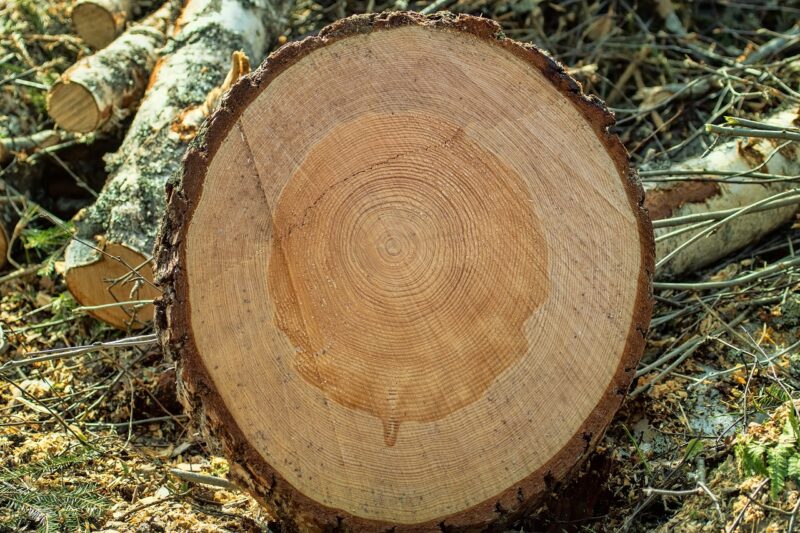Published: 19/08/25 By: Mike Bekin
In the world of sustainable timber, the terms ‘heartwood’ and ‘sapwood’ come up a lot. If you are not a timber expert, this can be quite confusing and make the search for the right timber products for your project even more challenging. To clear things up and get rid of the jargon, our EcoChoice team has sat down to clarify what heartwood and sapwood are, the difference between the two, and how they are relevant to your outdoor applications.
What is Heartwood?
Heartwood is the central part of the tree trunk. This is the strongest part of the tree, surrounded by the living outer layers (sapwood). When exploring ‘what is heartwood’, you can identify it by looking for the darker colour timber in the cross-section of a tree trunk.
Typically, heartwood is much denser than sapwood, with excellent resistance to decay and impressive durability. If you are looking for the toughest part of the tree, the heartwood is where you will find it.
What is Heartwood Used for?
Thanks to the superior strength and durability of heartwood, timber is often favoured for exterior and load-bearing constructions. Common uses include:
- Marine structures such as groynes, jetties and piers
- Cladding and decking
- Exterior furniture
- Railway sleepers
- Bridges
- Fencing and gate posts
Of course this also depends on the timber species being used. For example, Pine is going to be less suitable for these applications than a tougher, more durable hardwood timber, e.g. Ekki or Oak.
What is Sapwood?
Sapwood is the younger, outermost layer of the tree trunk which surrounds the heartwood, just beneath the bark. Unlike heartwood, sapwood plays a crucial role in transporting water and nutrients from the roots to the leaves. To spot sapwood, look for the lighter colour in the cross-section of a tree trunk, forming a ring just beneath the bark.
Sapwood is generally softer and less dense than heartwood. However, it is also more permeable, which means it readily absorbs preservatives, making it easier to treat for enhanced durability.
What is Sapwood Used for?
Because of its relative softness and ability to take on preservatives, sapwood is often used in applications where strength is less crucial, or where it can be treated for added durability. Common uses include:
- Interior joinery, such as mouldings and trim
- Veneers and panel products
- Treated fencing and landscaping timbers
- Pallets and packaging materials
- Constructions where the timber will be protected or coated
You can use sapwood for exterior applications, such as decking or cladding, but it should be treated to the right use class before installation.
Find the Right Timber for Your Project
Knowing the difference between heartwood and sapwood is a great starting point on your journey to find the right timber, but there is a lot more to learn! If you would rather get cracking with your project, we can help save you time. Our team at EcoChoice are timber experts, and will be happy to advise you on the right timber species and products for your next project.
Ready to find the right timber for your outdoor project? Get in touch with us today.
Tags: Heartwood, outdoor timber, Sapwood
Categories: Insights
